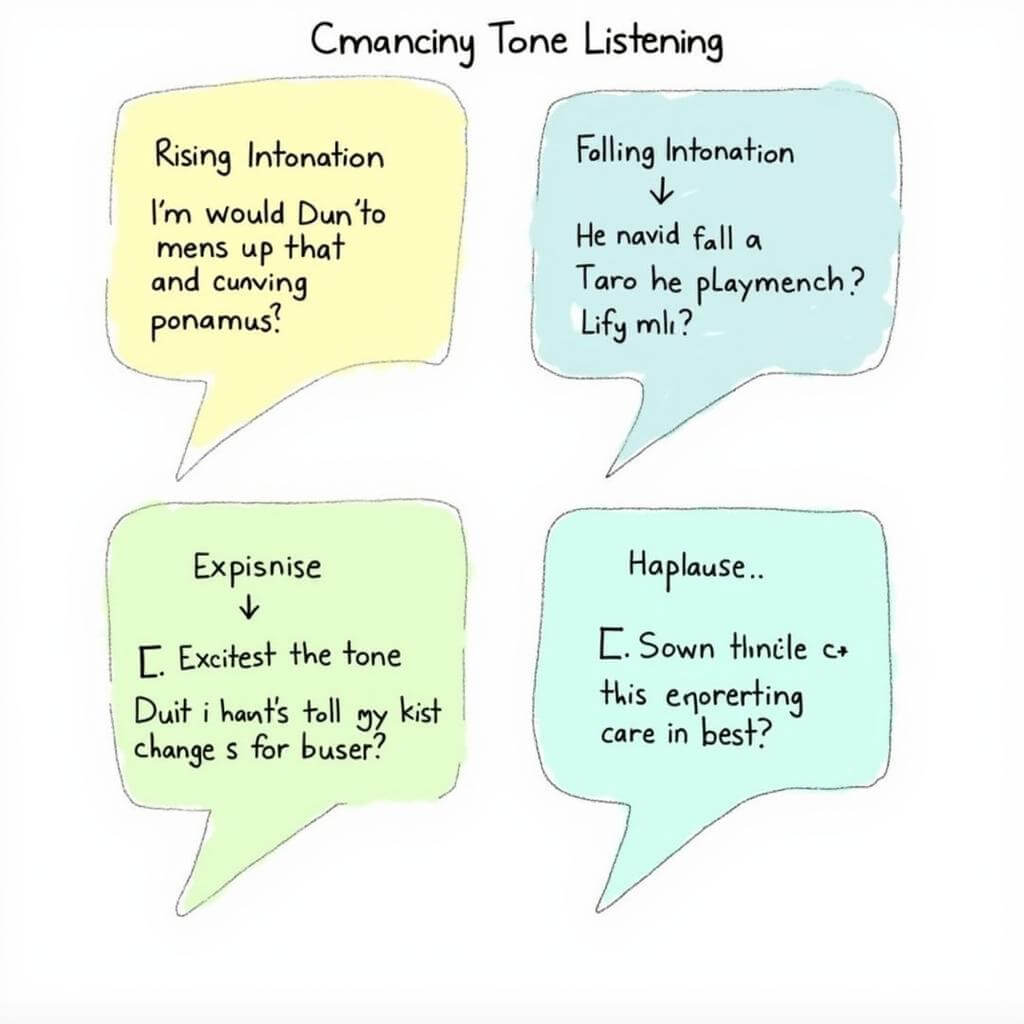Tone changes play a crucial role in the IELTS Listening test, often signaling important shifts in information or speaker attitudes. Recognizing these subtle variations can significantly improve your performance and help you capture key details more accurately. In this comprehensive guide, we’ll explore the importance of focusing on tone changes and provide practical strategies to enhance your listening skills for IELTS success.
Understanding Tone Changes in IELTS Listening
Tone changes refer to the variations in a speaker’s voice that convey different emotions, attitudes, or intentions. In the IELTS Listening test, these changes can indicate:
- Emphasis on key information
- Shifts in topic or perspective
- Contrasting ideas or opinions
- Levels of certainty or uncertainty
- Emotional states of the speakers
Listening for implicit meaning is closely related to recognizing tone changes, as they often convey underlying messages that aren’t explicitly stated.
Examples of Tone Changes
To better understand tone changes, consider the following examples:
- Rising intonation: “Is that your final answer?” (indicating doubt or seeking confirmation)
- Falling intonation: “That’s definitely the correct approach.” (expressing certainty)
- Emphasis: “It’s CRUCIAL to submit your application by Friday.” (stressing importance)
- Hesitation: “Well… I’m not entirely sure about that.” (showing uncertainty)
- Excitement: “We’ve just made a breakthrough discovery!” (conveying enthusiasm)

Applying Tone Change Recognition to IELTS Listening Tasks
Understanding tone changes is essential for various IELTS Listening question types:
- Multiple choice questions: Tone changes can help you identify the correct answer among similar options.
- Matching tasks: Speaker attitudes indicated by tone can guide you in matching statements to the correct person.
- Sentence completion: Recognizing emphasis through tone can help you identify key words to fill in the blanks.
- True/False/Not Given: Tone changes can reveal the speaker’s stance on a topic, aiding in determining the accuracy of statements.
Focusing on key transitions in listening is another crucial skill that complements tone change recognition, helping you navigate through different parts of the audio more effectively.
Common Mistakes in Interpreting Tone Changes
Be aware of these potential pitfalls when focusing on tone changes:
- Overreliance on tone: Don’t ignore the actual words being spoken.
- Misinterpreting cultural differences: Some cultures may express emotions differently through tone.
- Confusing stress with disagreement: Emphasis doesn’t always indicate conflict.
- Overlooking subtle changes: Pay attention to minor variations in pitch and speed.
- Assuming consistency: Speakers may change their tone throughout a conversation.
Effective Strategies for Practicing Tone Change Recognition
To improve your ability to identify and interpret tone changes, try these exercises:
- Listen to diverse audio sources: Podcasts, news broadcasts, and interviews offer a range of tones and accents.
- Practice with IELTS sample tests: Familiarize yourself with the types of tone changes common in the exam.
- Transcribe conversations: Write down what you hear, noting any tone changes you observe.
- Role-play conversations: Act out dialogues with a partner, focusing on expressing different emotions through tone.
- Analyze movie scenes: Watch scenes with the sound off, then on, to compare your interpretation of emotions based on visuals versus audio cues.
Identifying key transitions efficiently can further enhance your ability to recognize tone changes, as transitions often coincide with shifts in speaker attitude or emotion.
Applying Tone Change Recognition in Real IELTS Listening Tests
When taking the actual IELTS Listening test, keep these tips in mind:
- Stay focused throughout the entire recording, as tone changes can occur at any moment.
- Pay attention to the speaker’s pitch, speed, and volume variations.
- Note down any significant tone changes alongside your answers.
- Use tone changes as clues to predict upcoming information or question types.
- Practice active listening by mentally engaging with the content and speaker’s emotions.
Remember that listening for key factual details is equally important and often complemented by recognizing tone changes.
Conclusion
Mastering the skill of focusing on tone changes can significantly enhance your performance in the IELTS Listening test. By recognizing these subtle vocal cues, you’ll be better equipped to understand speakers’ intentions, attitudes, and the importance of specific information. Regular practice with diverse audio sources and IELTS-specific materials will help you develop this crucial skill. Remember to balance your focus on tone changes with attention to factual content and key transitions for a comprehensive approach to IELTS Listening success.